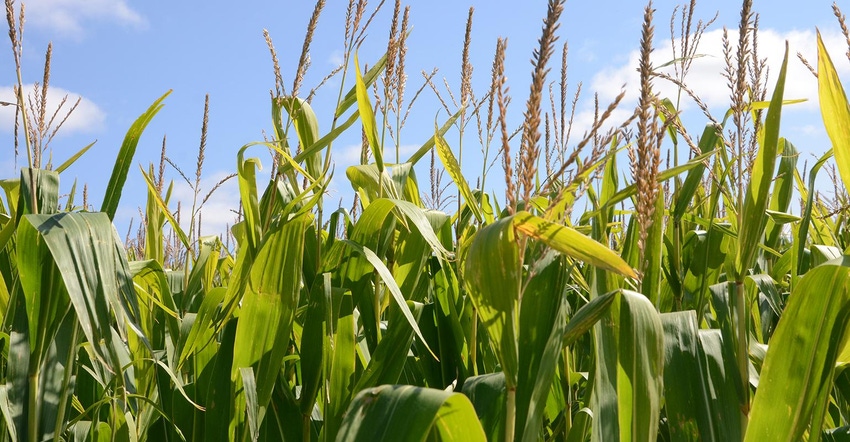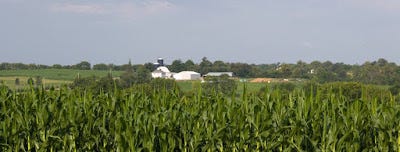July 22, 2019

By Jeff Coulter
Tassels are visible in some corn fields in Minnesota and will emerge in the remaining fields in the coming days. Tassel emergence occurs shortly after the upper leaves are pointing upward. Tassels and silks emerge at about the same time and indicate the start of pollination.

The critical period for yield determination in corn begins two weeks before tasseling and lasts until two weeks after tasseling, with the most important time being the week after tasseling. Stress to corn during this period due to dry soil, especially when accompanied by high air temperature, decreases yield by reducing the number of kernels per plant.
Although high air temperatures occurred in much of Minnesota on a few days last week, it is unlikely that they negatively affected corn in most fields. Heat stress has less of an impact on corn during pollination than drought stress, and typically does not occur until air temperature exceeds 86°F with dry soil or 92°F with adequate soil moisture and high humidity.
Drought and/or heat stress before pollination affects the number of potential kernels per row. It also delays silk emergence while accelerating or not affecting pollen shed, resulting in asynchrony between silk emergence and pollen shed. This can result in poor kernel set.
Combined drought and heat stress shortly after tassel emergence can cause exposed silks to dry quickly and be less receptive to pollen. The success of kernel set can be evaluated during and soon after pollination by carefully unwrapping husks and gently shaking ears, as silks detach from the ear within a couple days after they have been pollinated. Silks that do not detach have either not received pollen or received pollen very recently.
Drought stress following successful pollination is more common in Minnesota. This results in kernel loss at the tip of ears; however, kernel loss can occur in other patterns on ears if drought stress is intense or combined with other stresses.
A crop simulation model was used to evaluate the impact of this season’s weather on corn development and yield potential, and their variability across the Corn Belt. This was done on July 15 for many locations (including three in Minnesota) by researchers at the University of Nebraska as part of a multi-state project. Results are available at: July 15 Corn Yield Forecasts. Updated forecasts will be available in early August.
As of July 15, most corn in the Corn Belt was in the vegetative stage and its development was behind normal and that of last year. Overall, yield potential is variable and uncertain at this time, and will largely depend on weather conditions from now through mid-August.
Corn typically reaches maturity 55 to 60 days after the start of pollination. With this year’s later start to corn pollination, growers should anticipate wetter grain at harvest.
Source: Minnesota State University Extension
The source is solely responsible for the information provided and is wholly owned by the source. Informa Business Media and all its subsidiaries are not responsible for any of the content contained in this information asset.
You May Also Like




